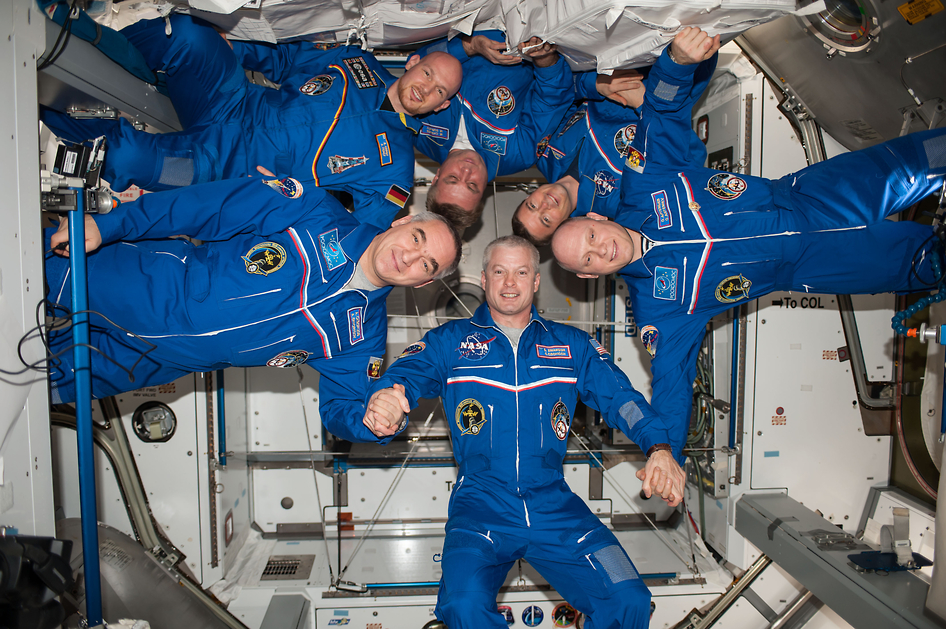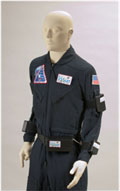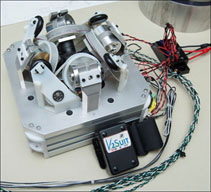
Wearable Devices for Astronauts to Help Find More Elbow Room in Space

Things can be a little cramped when stuffed inside a spacecraft. Not only are your crewmates taking up room, but toss in supplies and lots of gear for good measure!
And if you're headed for Mars, elbow room may be at a premium for such a long voyage. The good news is that living and working in microgravity does create opportunities for astronauts to expand their environment because they are not constrained by being bound to a "floor."
But NASA has yet to map how astronauts take advantage of weightlessness to expand the useable area of their vehicles.
Location and orientation

NASA has selected Draper Laboratory in Cambridge, Massachusetts. to develop a wearable device that will track astronauts' location and orientation as they move around the International Space Station (ISS).
From these devices, three dimensional models of the crew's use of the habitat can be created and validated. These models could inform and improve designs of future spacecraft to maximize the space astronauts have to work.
This is critical when plotting out any long duration exploration missions like planting footprints on the Red Planet.
Wearable prototype system
The Draper hardware incorporates optical sensors to determine an astronaut's location within the ISS relative to other objects, as well as inertial measurement units (IMUs) and algorithms that, when packaged into an integrated system, can provide continuous information about movement and orientation.
Get the Space.com Newsletter
Breaking space news, the latest updates on rocket launches, skywatching events and more!
Draper will deliver a wearable prototype system for NASA to test.
Elements of the algorithms that will integrate into the system were matured under previously funded work through NASA's Innovative Advanced Concepts (NIAC) program.

That earlier NIAC work developed spacesuit technology that introduces an artificial force similar to gravity to increase an astronaut's stability and health.
As Jana Schwartz, Draper's Human Centered Design & Engineering group leader noted in a Draper press statement:
"The habitable volume of the ISS is 13,696 cubic feet … nearly that of a 2,000 square foot home. That's a lot of room up in space, and Draper's technology can help NASA determine how to better use it when designing future spacecraft."
Leonard David has been reporting on the space industry for more than five decades. He is former director of research for the National Commission on Space and is co-author of Buzz Aldrin's 2013 book "Mission to Mars – My Vision for Space Exploration," published by National Geographic, with a new updated paperback version to be released in May. Follow us @Spacedotcom, Facebook and Google+. Originally published on Space.com.
Join our Space Forums to keep talking space on the latest missions, night sky and more! And if you have a news tip, correction or comment, let us know at: community@space.com.

Leonard David is an award-winning space journalist who has been reporting on space activities for more than 50 years. Currently writing as Space.com's Space Insider Columnist among his other projects, Leonard has authored numerous books on space exploration, Mars missions and more, with his latest being "Moon Rush: The New Space Race" published in 2019 by National Geographic. He also wrote "Mars: Our Future on the Red Planet" released in 2016 by National Geographic. Leonard has served as a correspondent for SpaceNews, Scientific American and Aerospace America for the AIAA. He has received many awards, including the first Ordway Award for Sustained Excellence in Spaceflight History in 2015 at the AAS Wernher von Braun Memorial Symposium. You can find out Leonard's latest project at his website and on Twitter.









